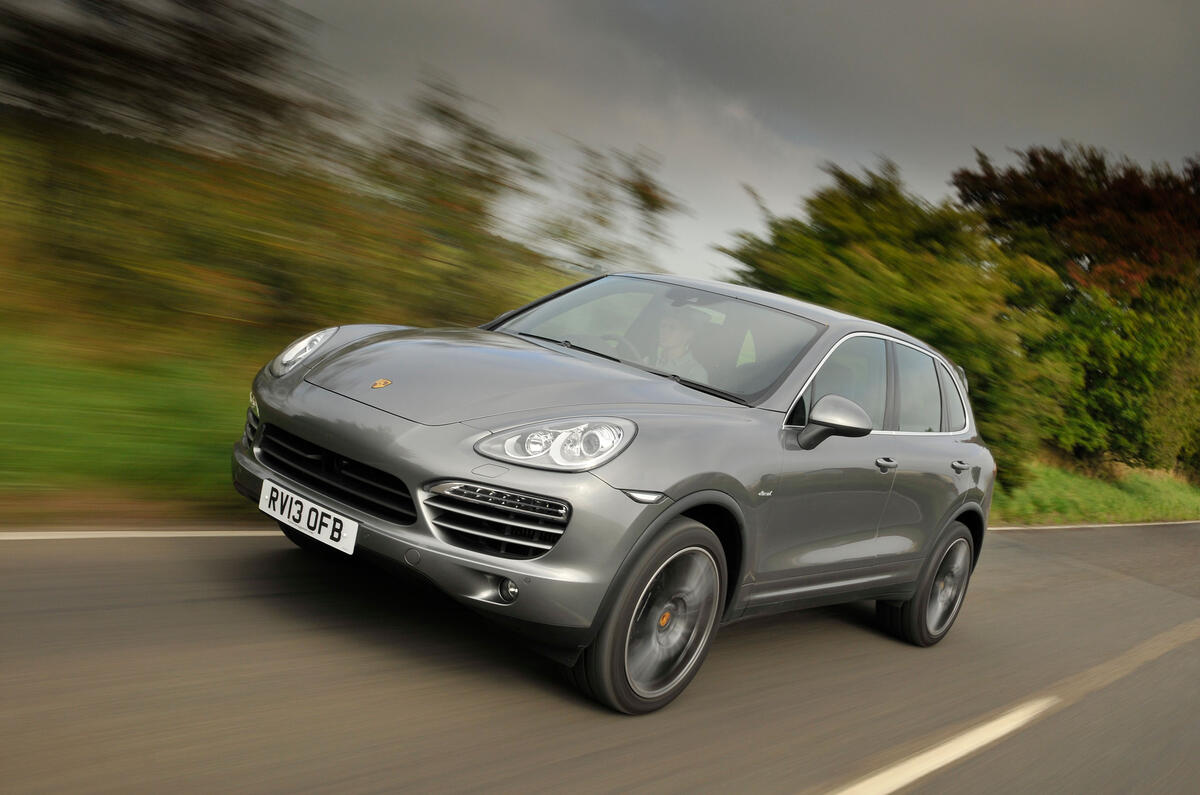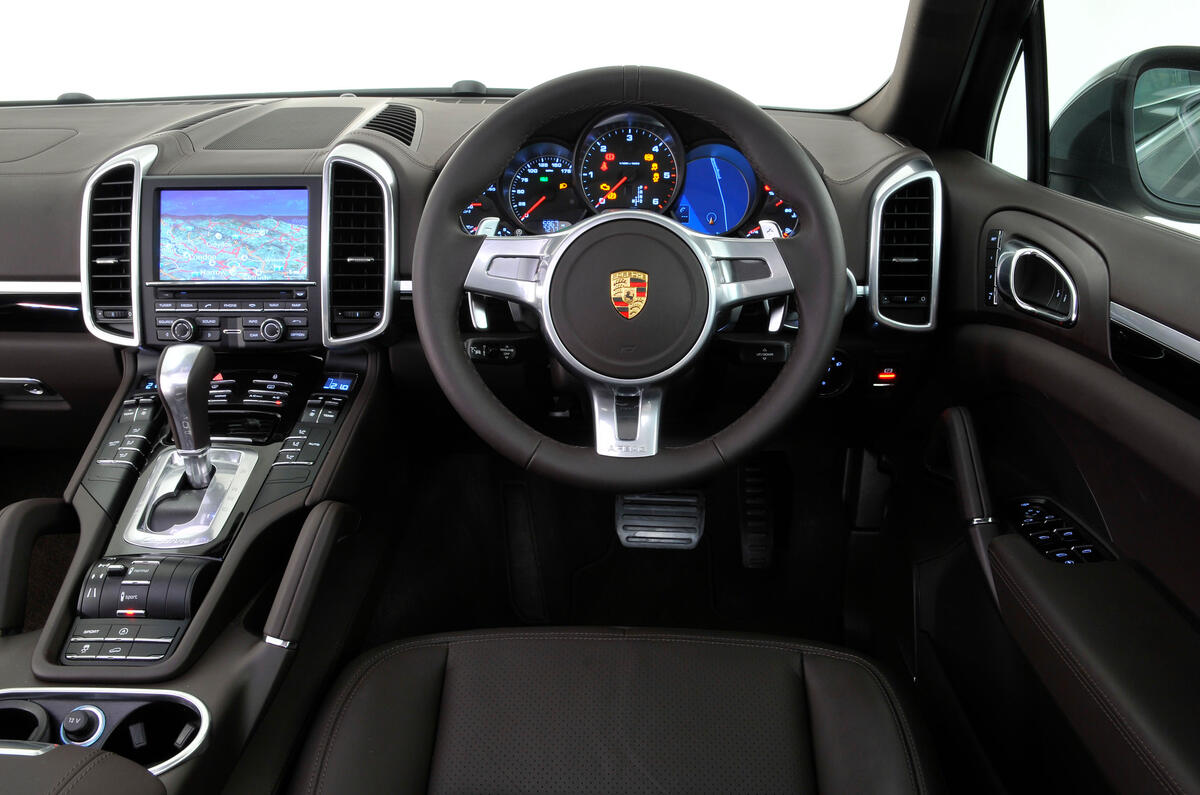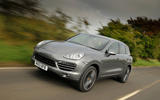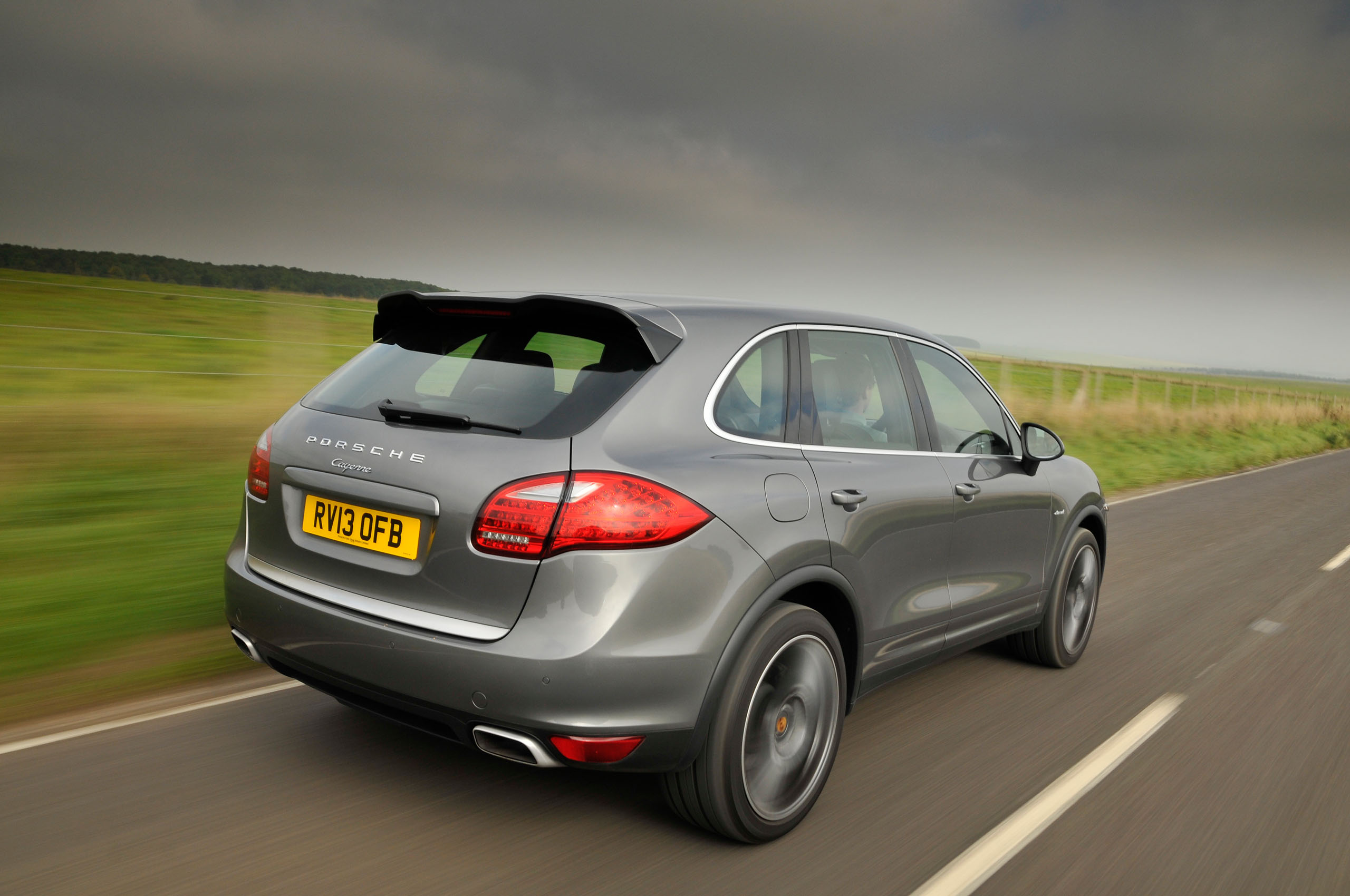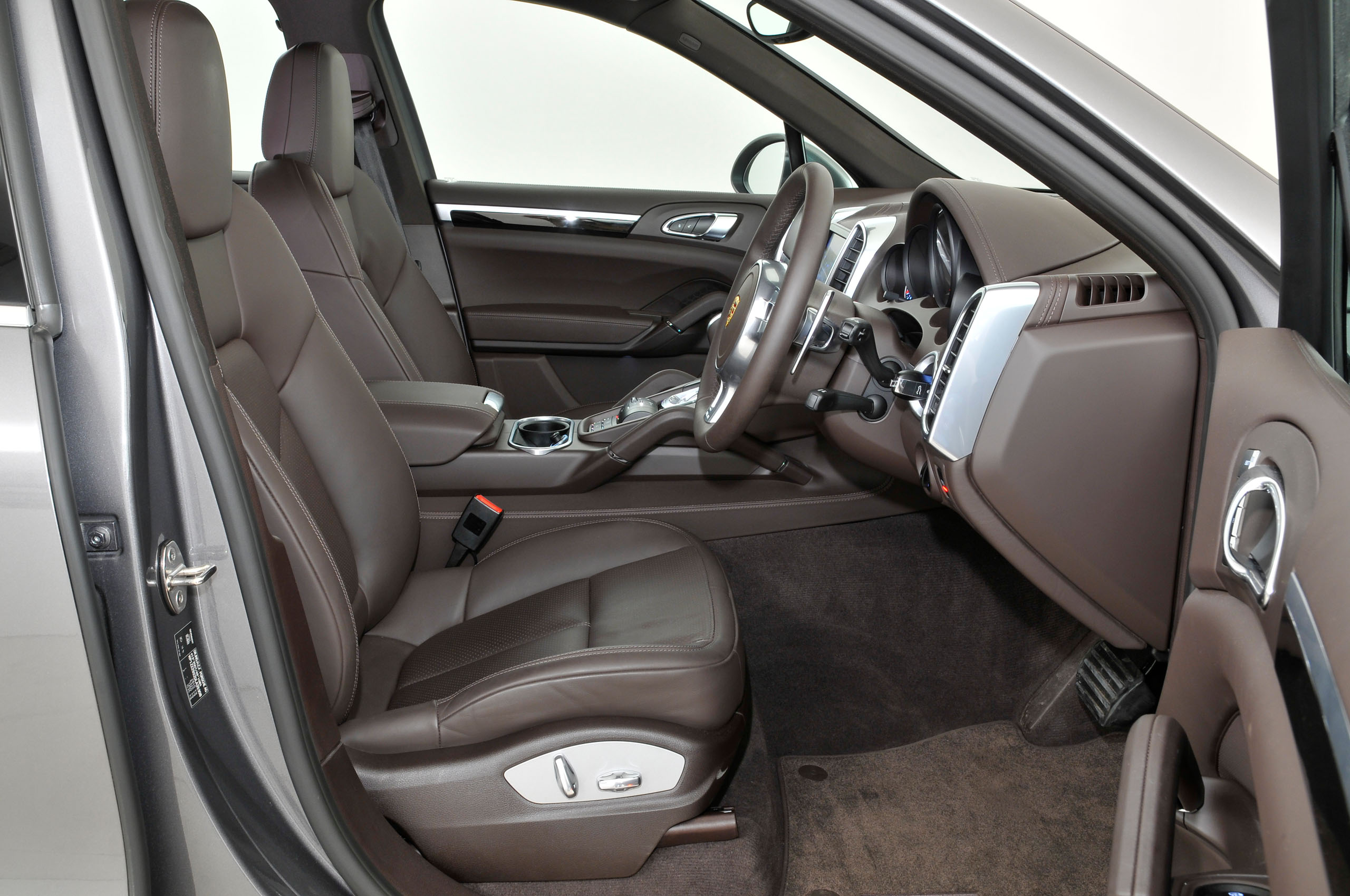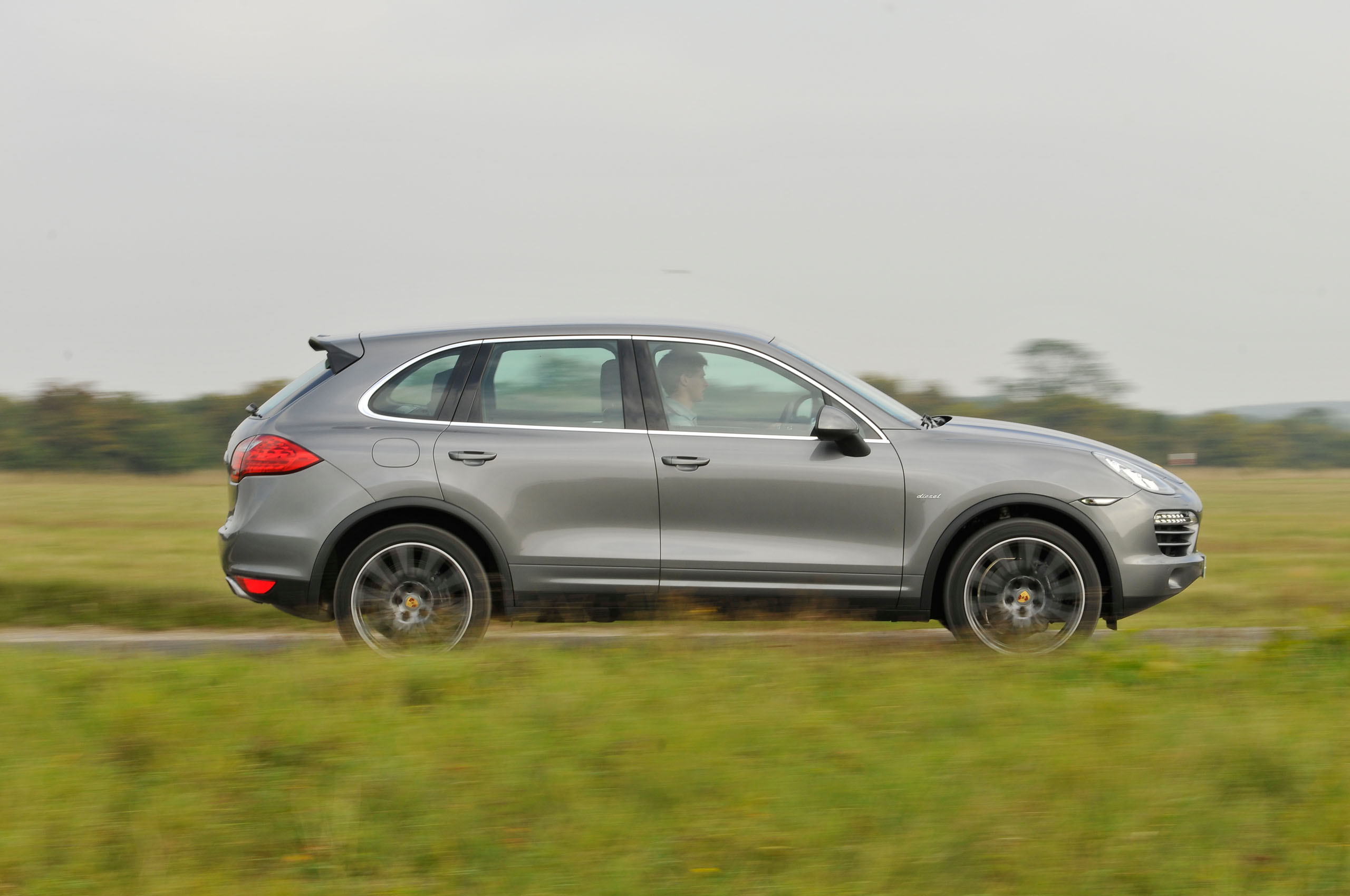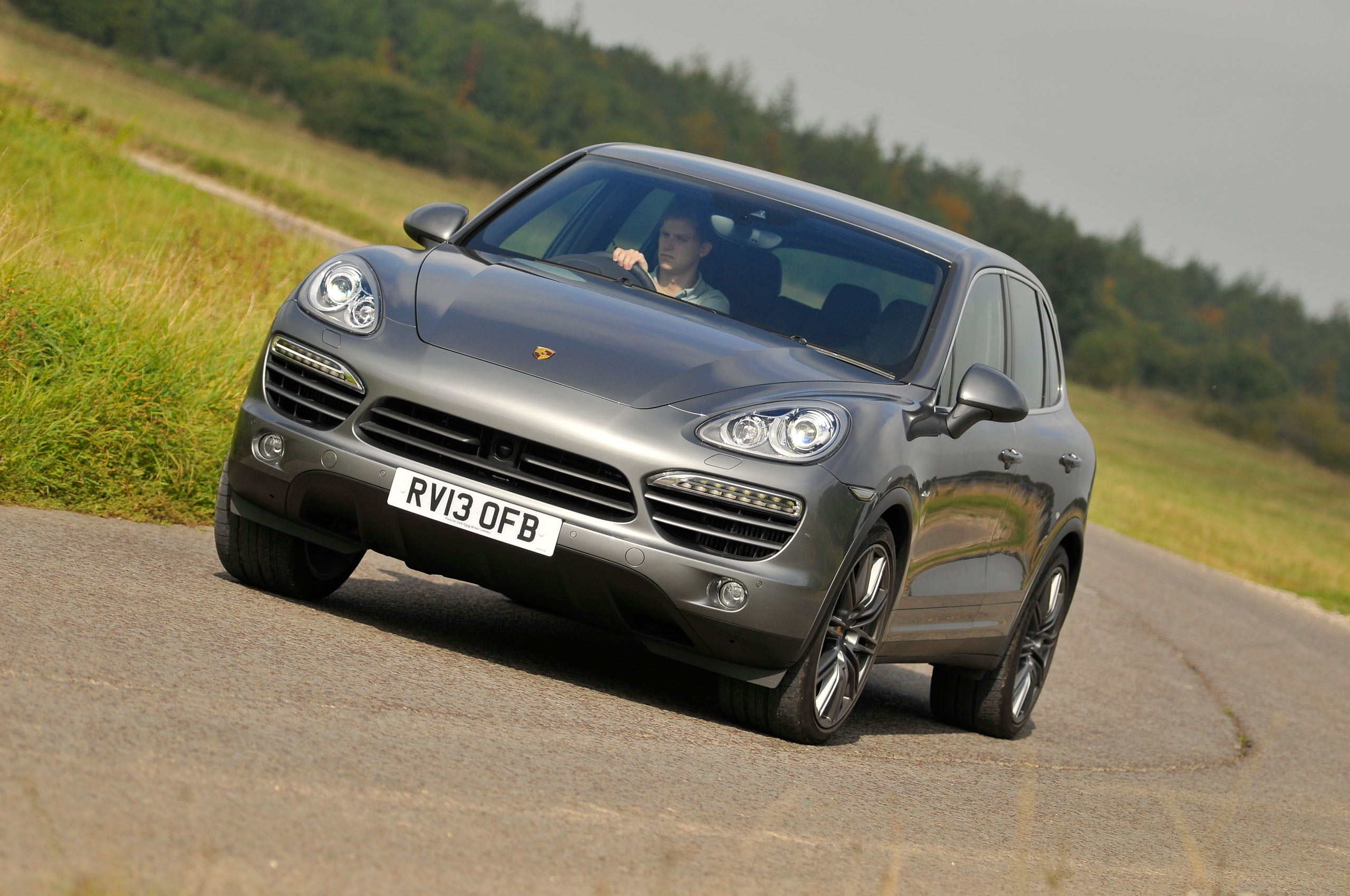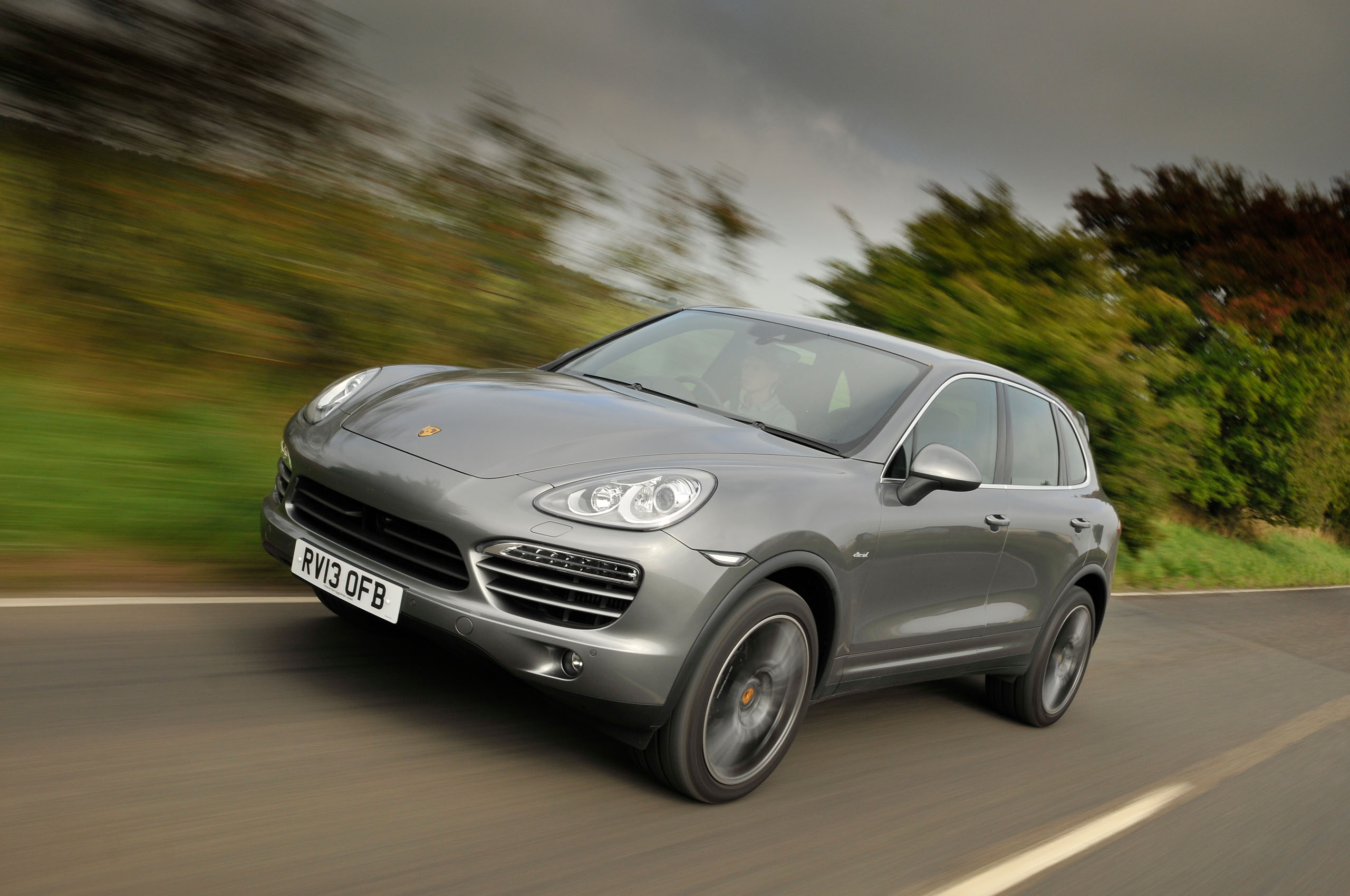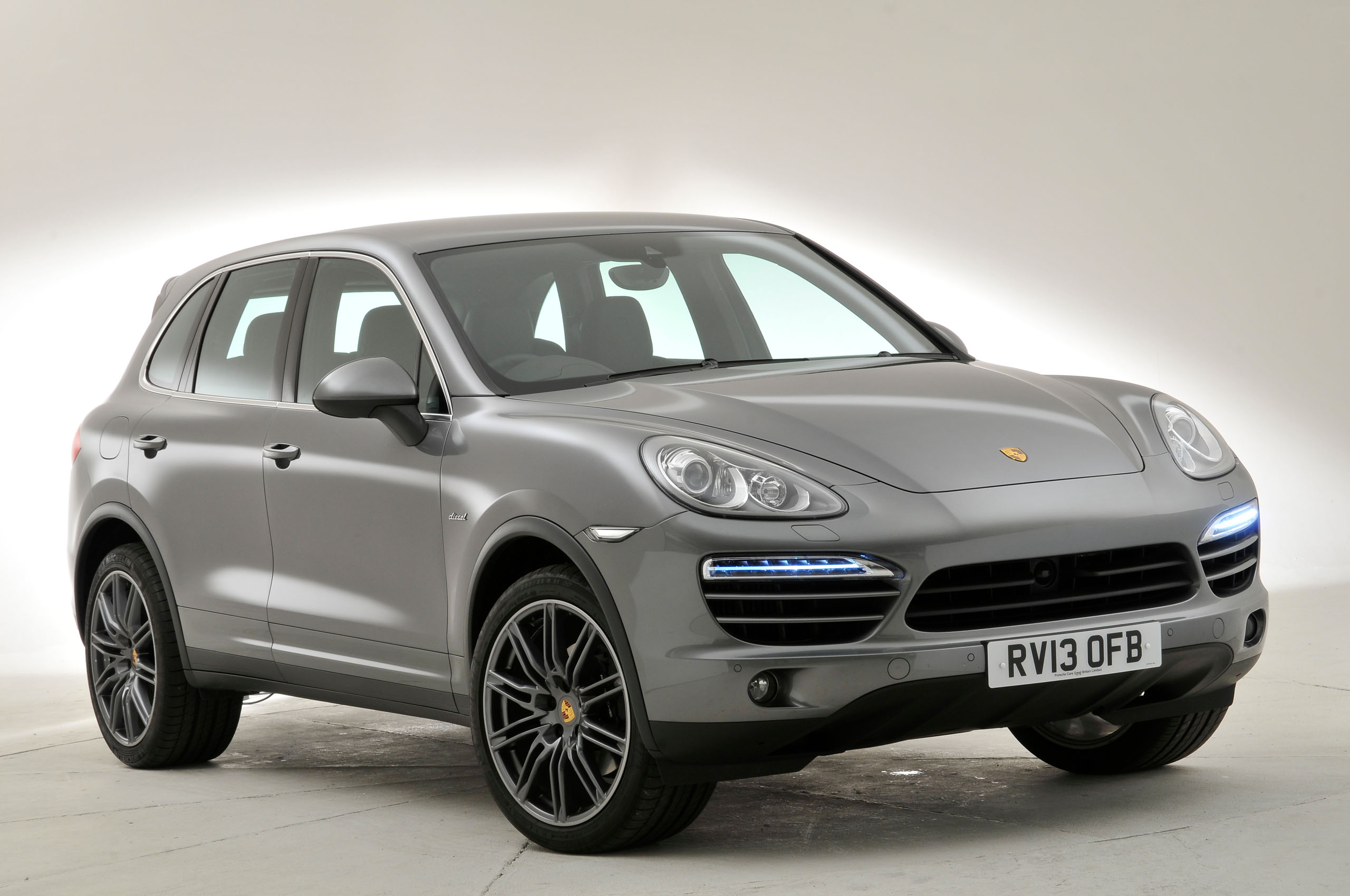The entry-level Cayenne Diesel gets a permanent four-wheel drive system, post collision braking system, 18in alloy wheels, bi-xenon headlights, LED day-running-lights, electrically adjustable, folding and heated wing mirrors, dual-zone climate control, electrically adjustable front seats, cruise control, parking sensors, a leather upholstery and Porsche's Communication Management infotainment system complete with sat nav, Bluetooth, USB connectivity, DAB radio and a 7.0in touchscreen display.
Upgrading to Cayenne S or S Diesel adds stainless steel pedals, a quad-exhaust system and Porsche's active four-wheel drive system, while the Cayenne S E-Hybrid gets various hybrid management technology and software and adaptive suspension. The sporty looking GTS gains an Alcantara upholstery, a sporty bodykit, 20in alloy wheels, adaptive bi-xenon headlights and LED foglights.
The range-topping Turbo model gets 19in alloy wheels, LED headlights, automatic dimming mirrors, 18-way adjustable sports seats, adaptive air suspension front and rear heated seats and a Bose sound system, while the boombastic Cayenne Turbo S gets adaptive LED headlights, a two-tone leather upholstery, numerous carbon fibre interior touches, a torque vectoring system and dynamic chassis control.
When Porsche introduced the Panamera so too did it introduce a new design template for all its interiors that has been applied to every product produced since then, but probably never with more success than in the Cayenne.
In fact while the old Cayenne was let down by both the quality and the ergonomics of its cabin, the current car interior is far from disappointing. Even so it’s still a long way from perfect with an analogue speedometer sufficiently hard to read for Porsche to provide a digital alternative and a driving position in right hand drive cars that provides very little resting space for your redundant left leg.
Also, while Porsche navigation has progressed to the point where the current touch screen arrangement is a wild improvement over the old system it still seems pretty clunky compared to rival systems from any of BMW, Audi or Mercedes.
Nevertheless you’ll not fault the quality of the materials now used on even the cheapest Cayenne, the lofty view afforded by the elevated driving position or the class and logical layout of the laid out on the upward sloping centre console, ahead and aft of the gear shift selector.
There are many reasons to choose a Cayenne over any other full size SUV, but interior space is not one of them. It’s not cramped in here, but nor is there vastly more space than you’ll find in typical five door large family hatch like a Ford Mondeo.
The rear seat is comfortable and blessed with decent headroom, but legroom is not better than adequate by the class standard and you might even say poor given Porsche has had to make no provision or compromise for a sixth and seven seat in the boot. It seems a Porsche with three rows of seats remains a step too far, for now at least.
Nor is the boot especially capacious: it’s big enough to let you stow more than most conventional estates like the BMW 5 Series Touring and Audi A6 Avant (but not the Mercedes-Benz E-Class Estate), but other SUVs, the Audi Q7 among them, are substantially more effective family hold-alls.


